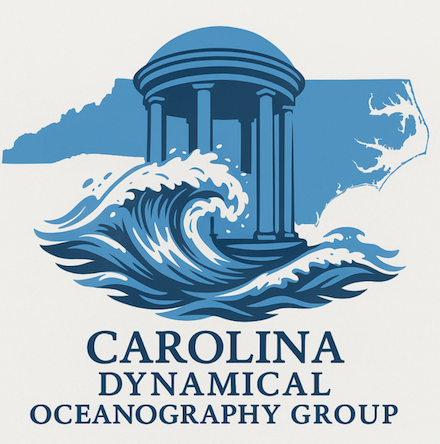Research
Our research focuses on polar and coastal ocean dynamics, emphasizing ice-ocean interactions across scales—from mesoscale to microscale—near ice shelf cavities and fjords in Greenland and Antarctica, as well as coastal processes along the Carolina shelf. Please visit the Movies page to see recent work in action.
Recent Work
Improved Parameterizations of Vertical Ice-Ocean Interfaces.

Currently, the momentum, heat, and salt fluxes at vertical boundaries between ocean and ice faces (glaciers and icebergs) is poorly represented and leads to order of magnitude discrepancies in melt at the warmest glaciers. I used Large Eddy Simulations and Direct Numerical Simulations to better understand the dynamics at these boundary layers.
Roles of Geometry and Standing Eddies in Mediating Fjord-Shelf Exchange
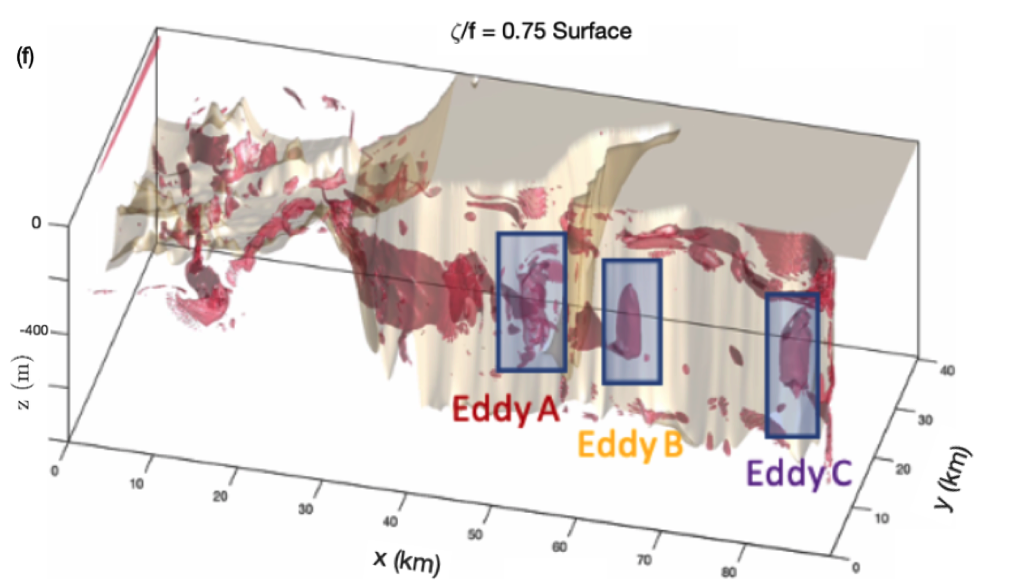
A key feature of high resolution fjord simulations that emerges when realistic fjord bathymetries are used are standing eddies. We discovered the existence of these eddies using high-resolution MITgcm fjord simulations, which used datafrom the NASA OMG (Oceans Melting Greenland) observations. This builds on the understanding of fjord recirculation from idealized theories in projects (1),(2), and (4) by concentrating the vorticity dynamics to a series of standing eddies, which have the potential to amplify glacial melt rates.
Linking Overturning, Recirculation, and Melt in Glacial Fjords
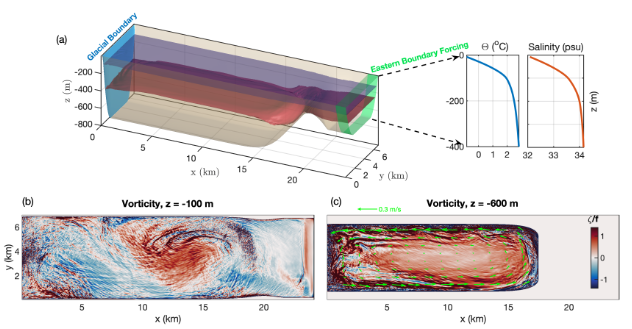
Glacial fjords are long, narrow, and deep inlets that connect glaciers to the open ocean. These glacial fjords exist around the margins of Greenland, West Antarctica, Alaska, and other regions, and collectively contribute a significant source of ice discharge into the ocean. Over the past two decades, tidewater glaciers in Greenland have accelerated, which can lead to sea level rise, and there is growing evidence that this acceleration is caused by deep warm water currents that flow into the fjords from the open ocean. These warm water currents have the potential to melt the submarine sides of glaciers, causing them to retreat over time. The dynamics of warm water delivery to the glacier face, particularly its interaction with fjord circulation, are presently poorly understood.
Dynamics of Eddies Generated by Sea Ice Leads
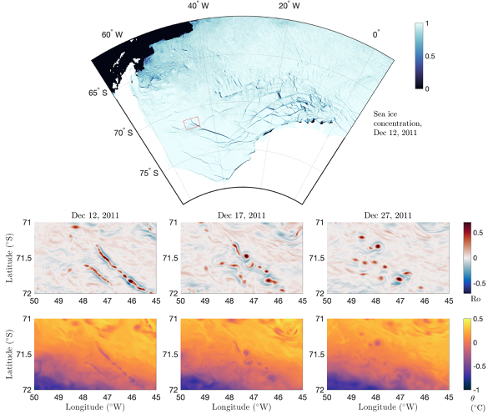
Kaylie Cohanim, who was an undergraduate researcher at UCLA, used an idealized MITgcm simulation to study submesoscale eddy generation beneath sea ice leads.
Geometric Constraints on Glacial Fjord-Shelf Exchange
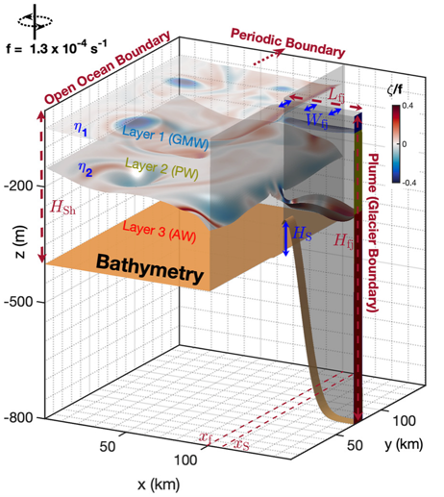
The oceanic connections between tidewater glaciers and continental shelf waters are modulated and controlled by geometrically complex fjords. These fjords exhibit both overturning circulations and horizontal recirculations, driven by a combination of water mass transformation at the head of the fjord, variability on the continental shelf, and atmospheric forcing. However, it remains unclear which geometric and forcing parameters are the most important in exerting control on the overturning and horizontal recirculation.
Sill-Influenced Circulation in Ice Shelf Cavities
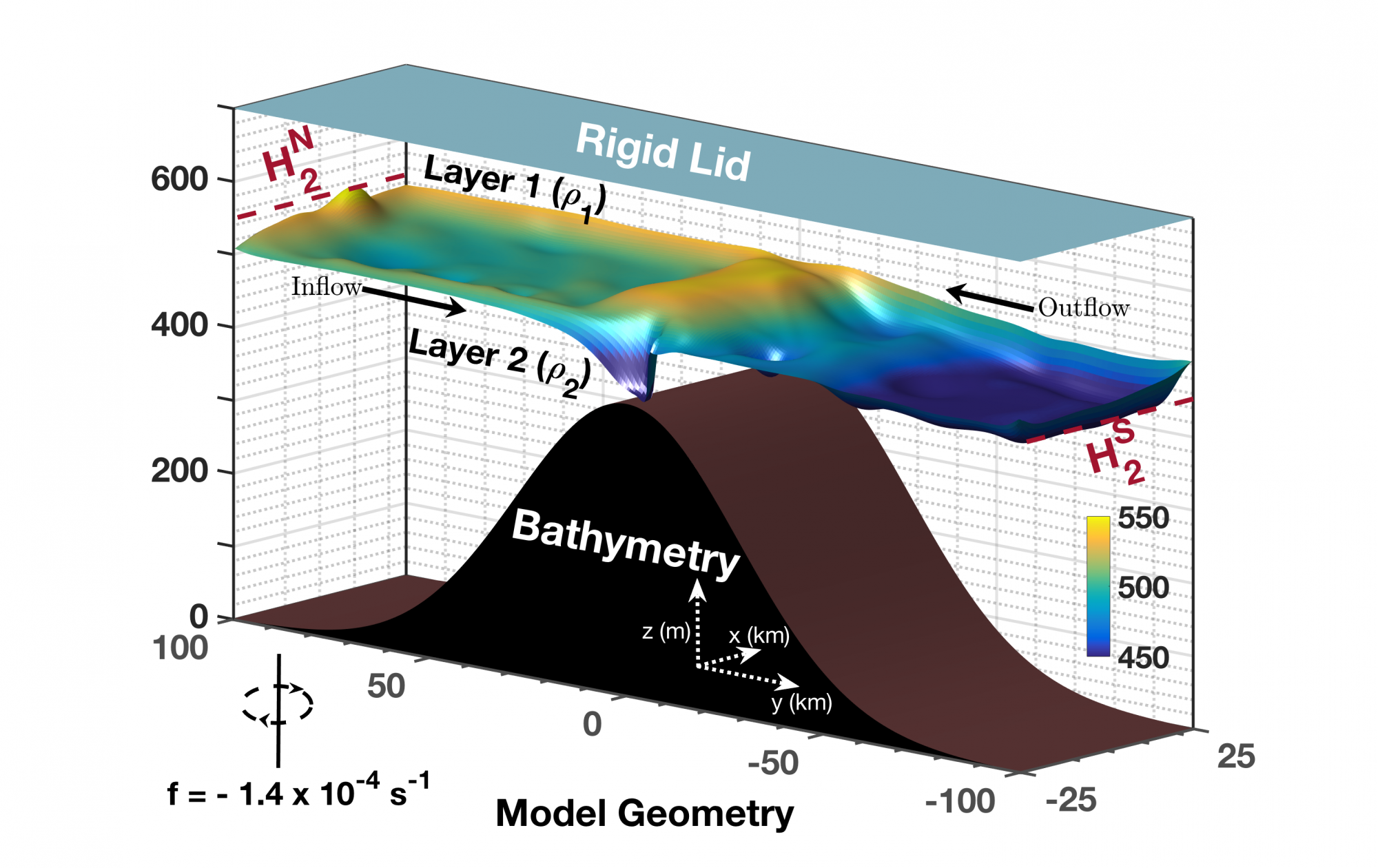
There are vast cavities forming beneath some of the fastest melting ice shelves in West Antarctica and northern Greenland. One notable example is the Pine Island Glacier in West Antarctica. The Pine Island Glacier has a tall bathymetric sill or “bump” in the seafloor that holds back relatively warm (by a few degrees) water from the open ocean. This work seeks to understand how the height of the bump holds back open ocean, warm water from melting the glaciers in these regions.
Submesoscale Eddies beneath Antarctic sea ice
Jennifer Kosty, who was an undergraduate researcher at UCLA used seal data to find and analyze submesoscale eddies below sea ice around Antarctica.
Ice-Ocean Boundary Layers
We are using Direct Numerical Simulations to understand and guide observations at LeConte Glacier, Alaska and provide improved parameterizations of melting glaciers and icebergs. This work aims to provide a physical understanding of convective and shear ice-ocean boundary layers and how melt plumes may achieve a much stronger melt rate due to interaction between horizontal currents with the buoyancy-driven plume dynamics. These ideas will be tested and confirmed in upcoming field campaigns in Alaska.
The Influence of sub-Ice Shelf Channels on Melt
Sarah Villhauer, an undergraduate research at UCLA, is using idealized models of sub ice-shelf channels to study the role of geometry on the circulations within these channels and their role in driving melt.

